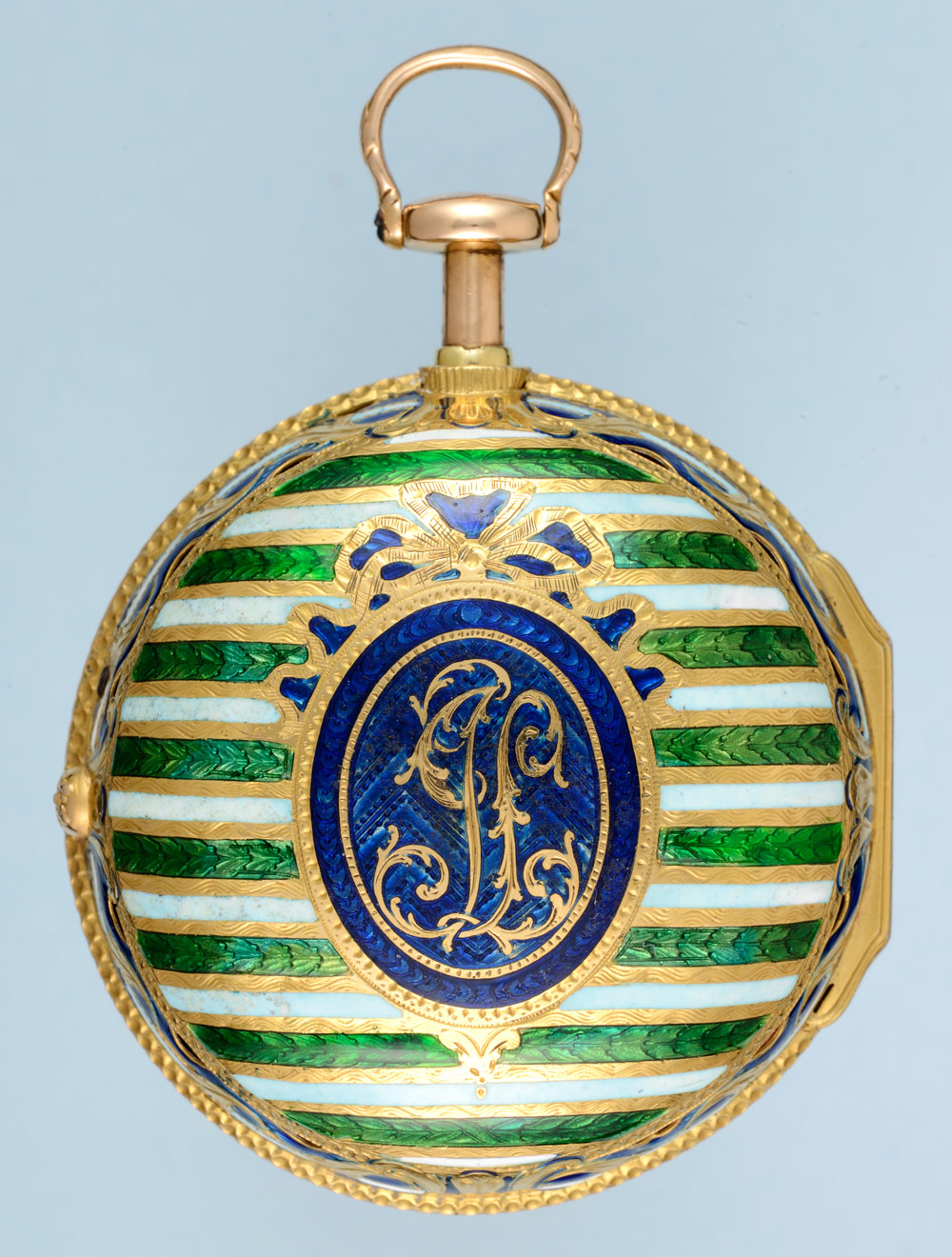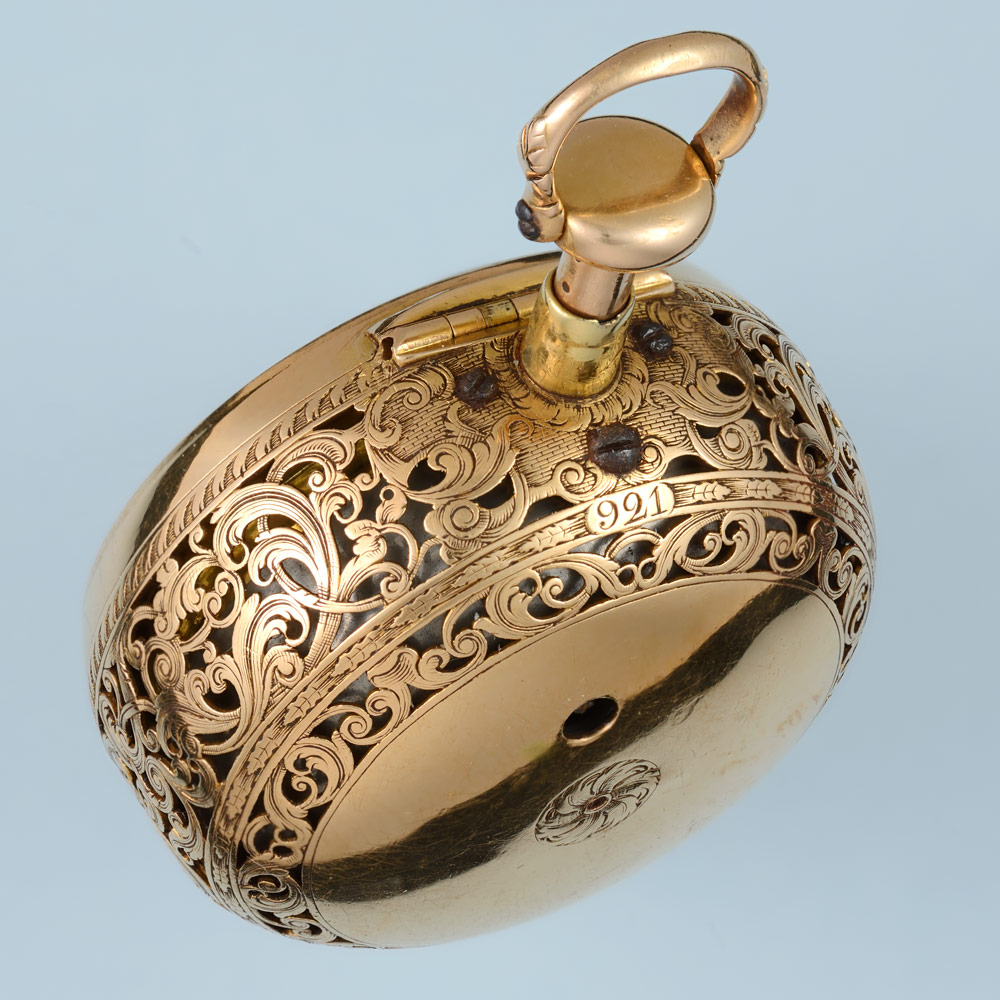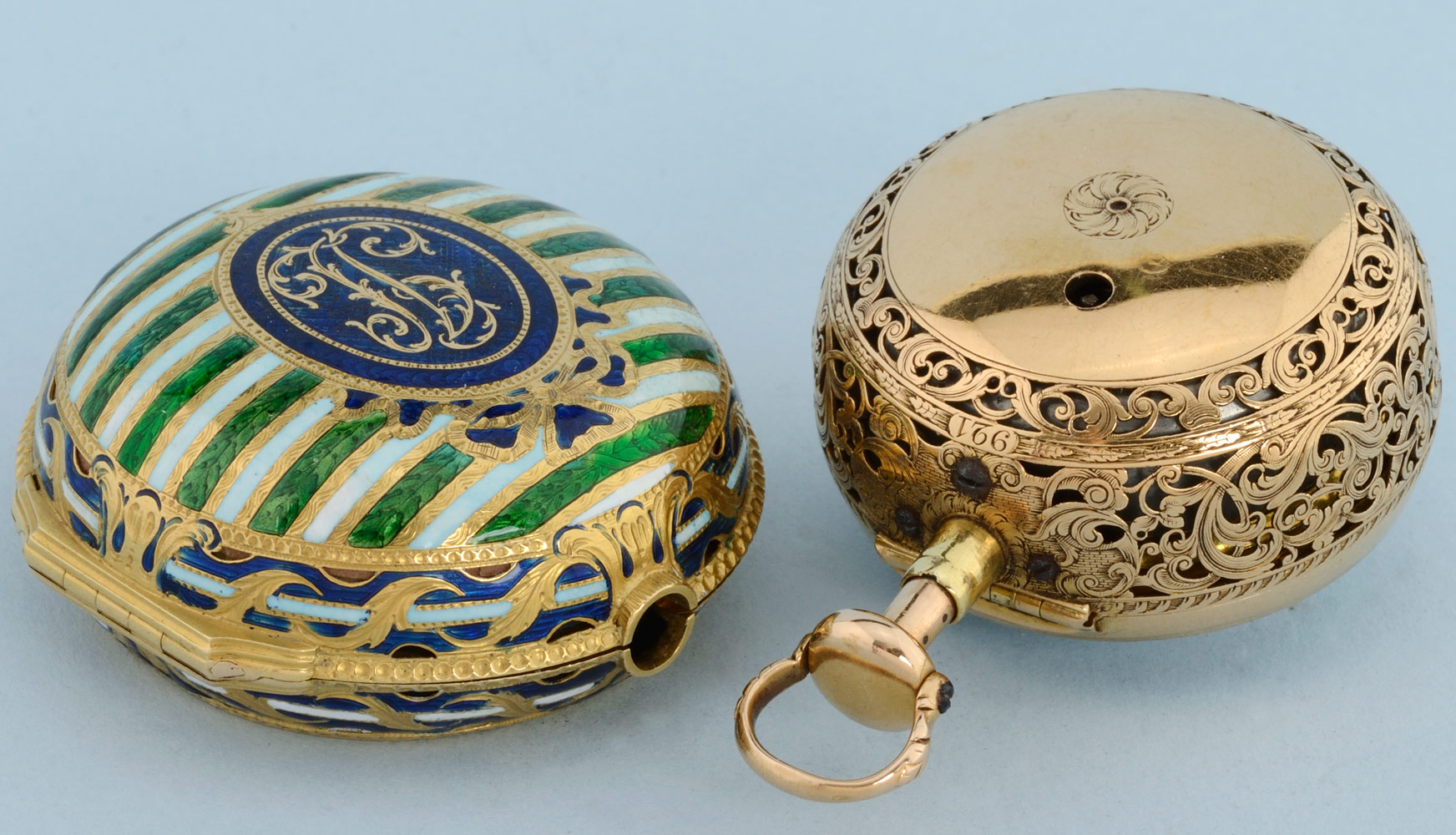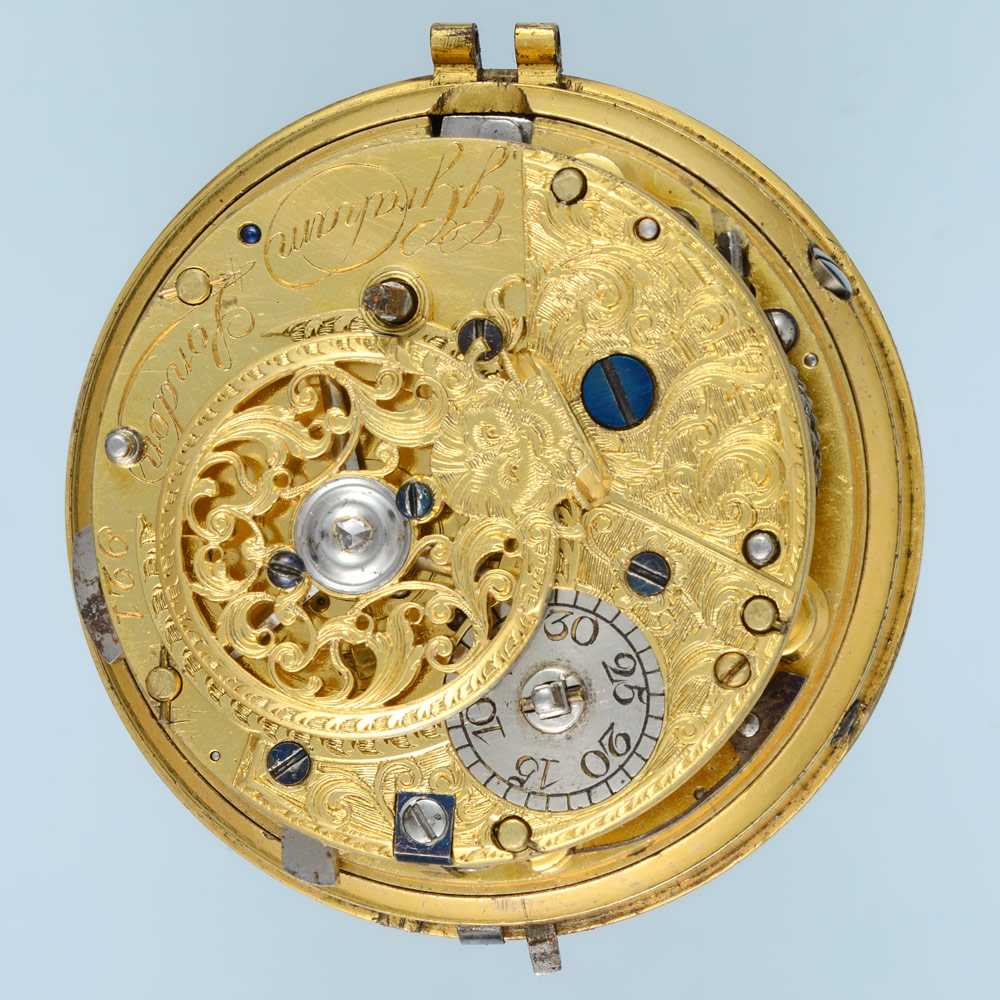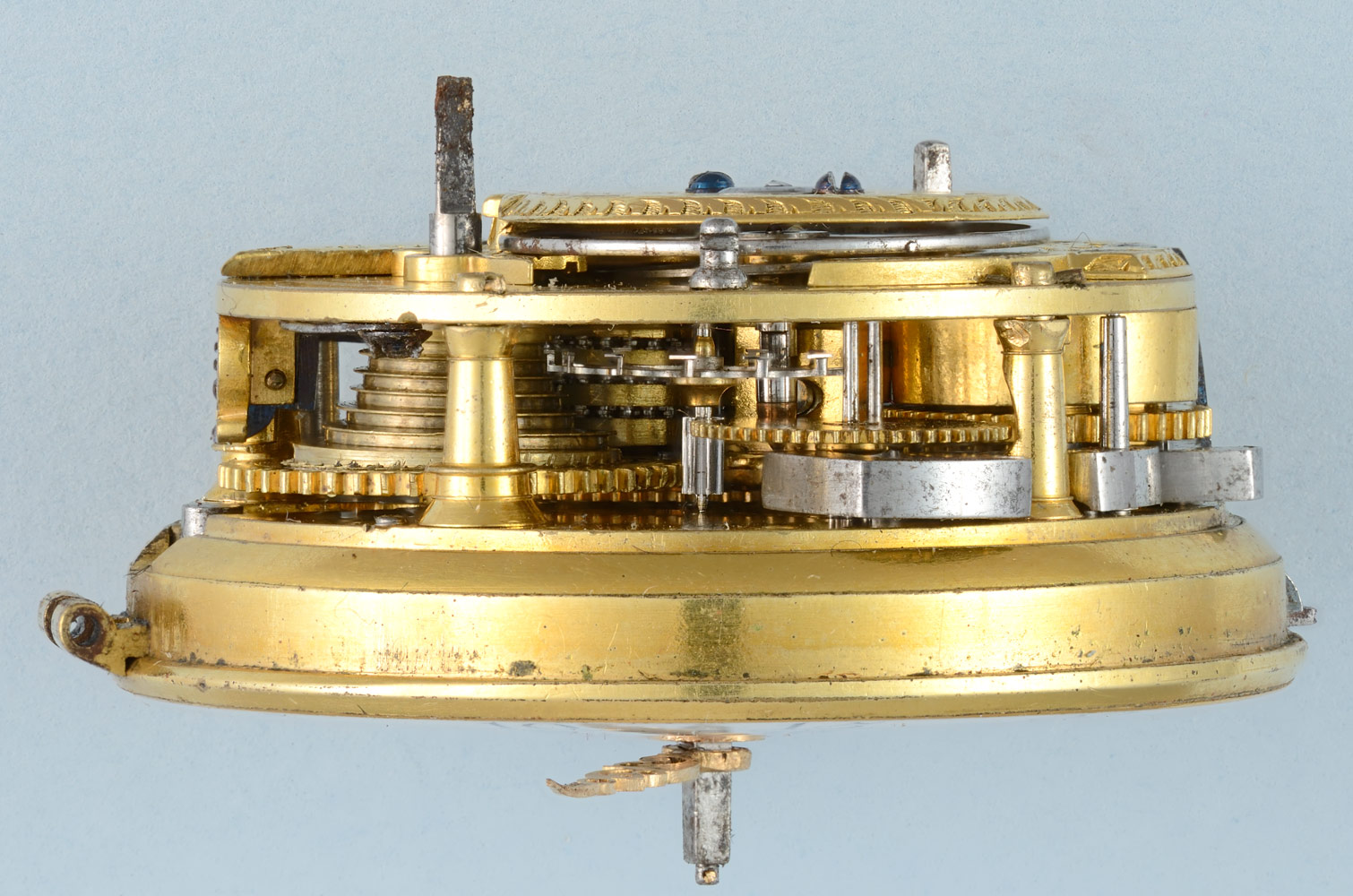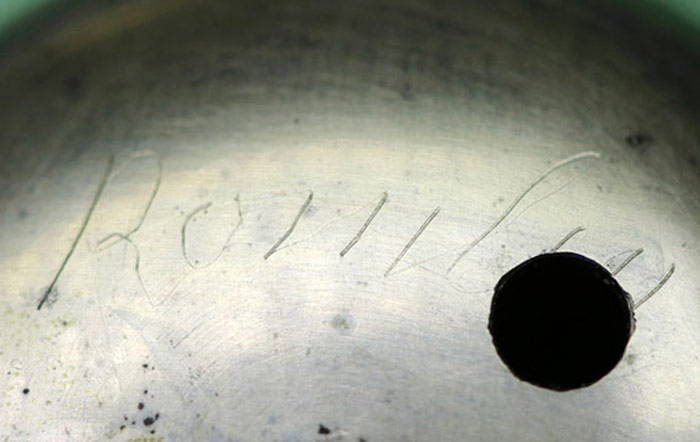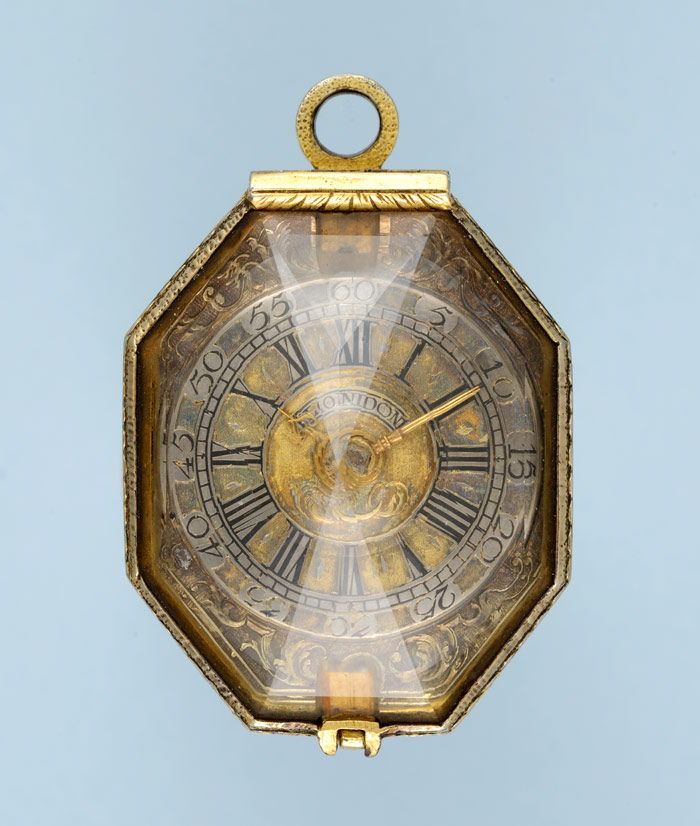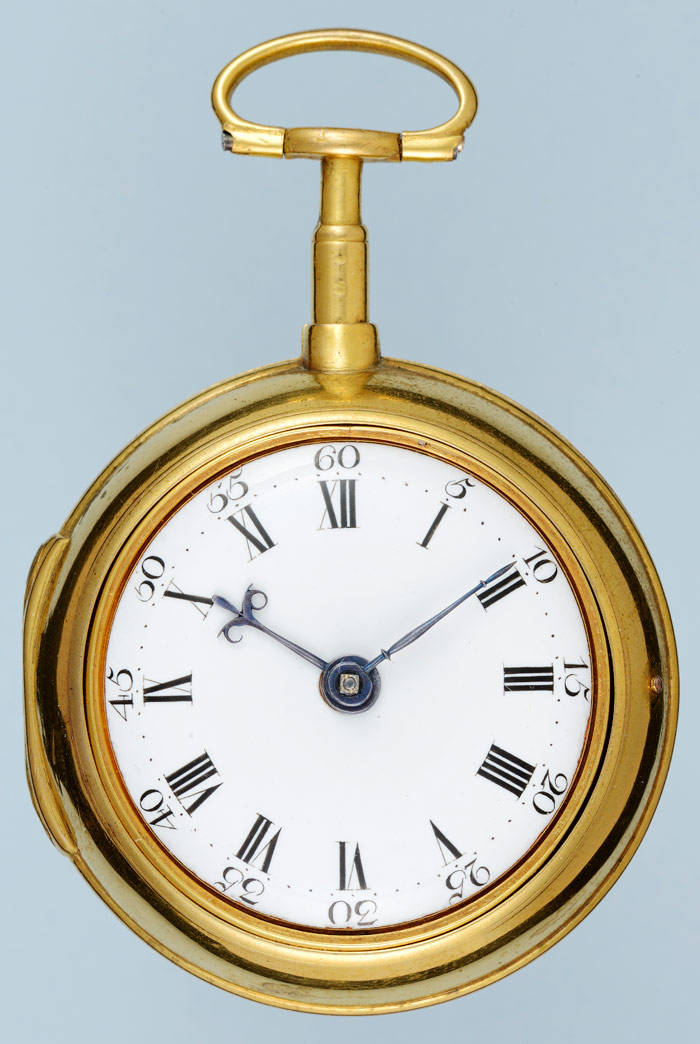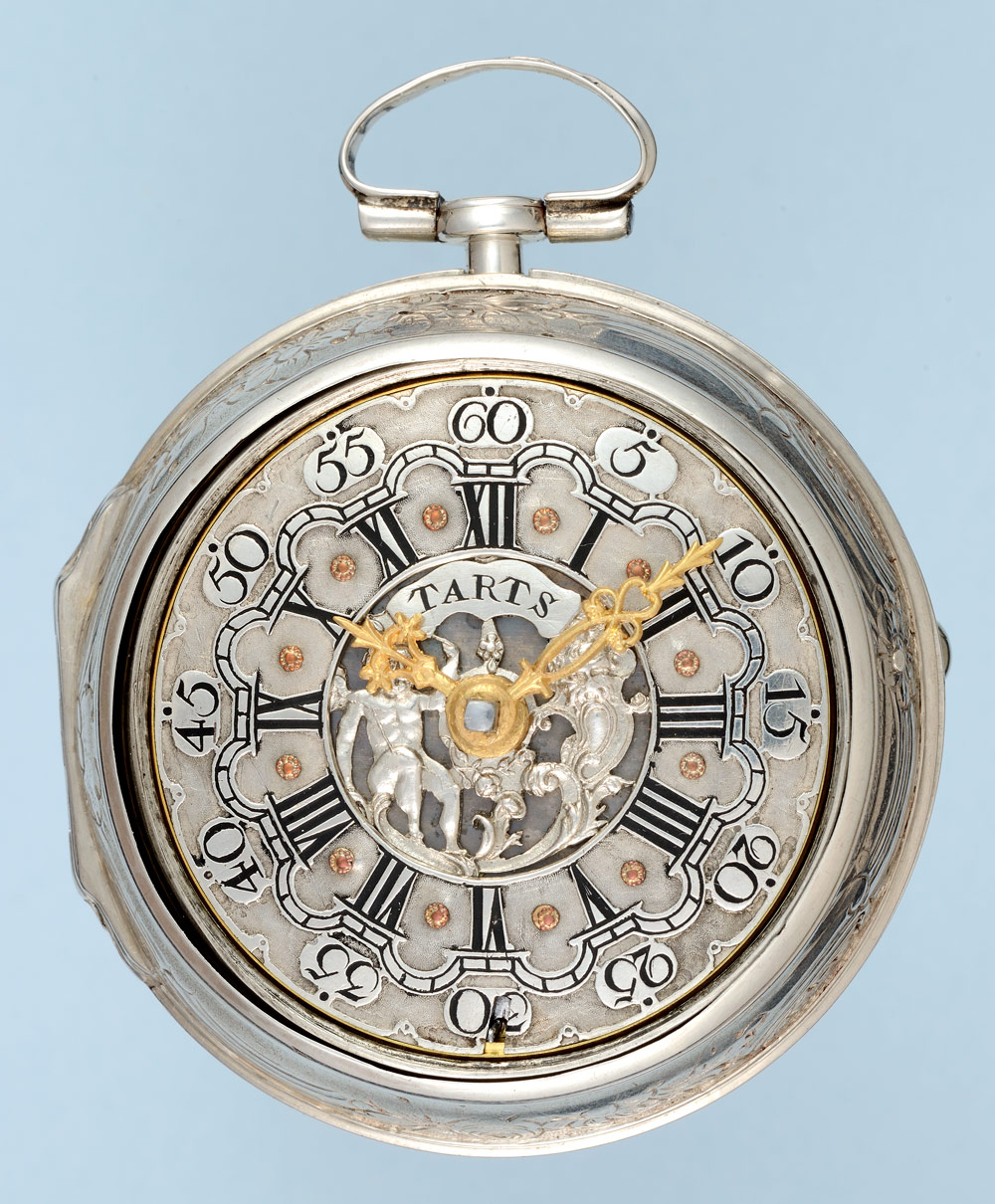A1503
Gold and Enamel Repeating Cylinder by Graham
£32,000.00
Hallmarked London 1749
Out of stock
Description
A mid 18th Century quarter repeating cylinder by Graham in gold and enamel pair cases. Full plate fire gilt movement with five turned pillars. Pierced and engraved masked cock with diamond endstone in a polished steel setting, engraved foot and plate for the silver regulator disc. Fusee and chain with worm and wheel barrel setup between the plates. Plain three arm steel balance, blue steel spiral hairspring. Polished steel cylinder, large steel escape wheel. Push pendant quarter repeating on a bell in the case. Fine white enamel dial with Roman and Arabic numerals, pierced gold hands. 20 carat gold pierced and engraved inner case bearing the movement number below the gold pendant. Under the signed bell the maker's mark “JW” below a star and number corresponding to that on the movement. 20 carat gold outer case decorated in white, translucent green and blue enamel. Oval monogrammed cartouche of translucent blue enamel over an engraved ground framed within an engraved gold ribbon. Solid white champleve enamel horizontal stripes alternate with translucent green enamel stipes over an engraved ground. The bezel and edge of the back pierced and decorated with white champleve enamel and translucent blue enamel interwoven with engraved gold acanthus leaves.




